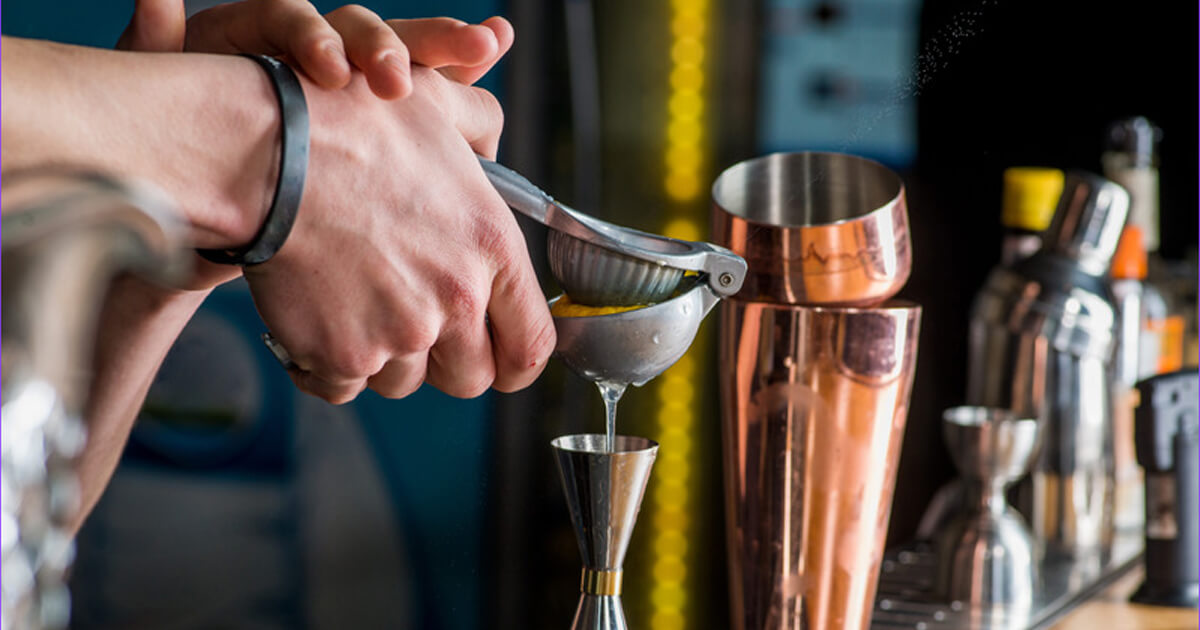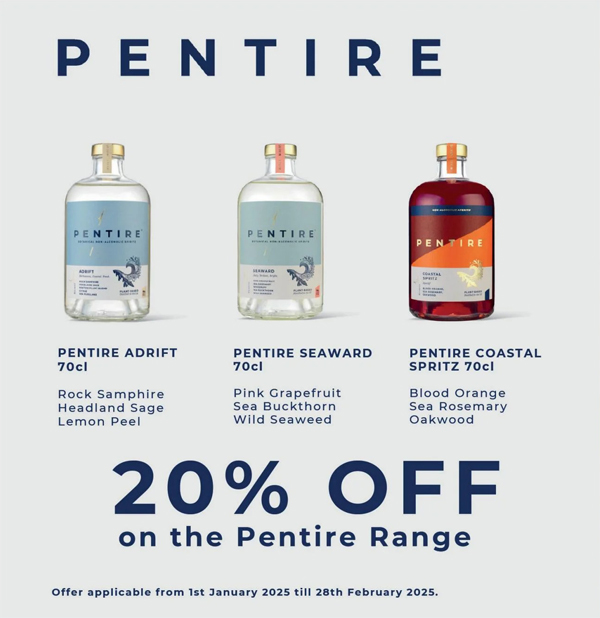Ever feel like your bar’s profits aren’t quite where they should be? You’re selling drinks all night, but when you look at the numbers, the margins just aren’t adding up.
Let’s be honest. Running a bar isn’t just about mixing drinks—it’s about making money while keeping customers happy. But there’s one thing quietly draining your profits: waste.
Think about it. Overpouring, spoiled ingredients, forgotten garnishes—it all adds up. In fact, studies show that bars lose 20% or more of their potential revenue due to waste and inefficiencies. That’s cash slipping right through your fingers!
According to research, the main causes of food waste in UK restaurants are:
- Preparation – 45% (excess ingredients and trimmings)
- Customer leftovers – 34% (over-portioning leads to unnecessary waste)
- Spoilage – 21% (ingredients going bad before use)
A big chunk of this applies directly to bars, too! But here’s the good news: you don’t have to overhaul your entire operation to fix this. A few minor tweaks can make a huge difference in your margins. Let’s break it down into five game-changing strategies.
Five Key Strategies to Cut Bar Waste and Boost Margins
Reducing waste in your bar isn’t about making drastic changes—it’s about small, smart tweaks that add up over time. Below are five essential strategies every bar owner should implement to keep profits high and costs low.
1. Stop Overpouring – Standardise Your Measurements
Overpouring is the fastest way to lose money without even realising it. Every extra splash of liquor may not seem like much, but multiply that across dozens of drinks per night? That’s a serious profit loss. Here’s how to fix it:
- Use jiggers or measured pour spouts: Keeps drinks consistent and controls costs.
- Train bartenders on portioning: Even experienced staff can get a little heavy-handed.
- Try tech solutions: Digital pour control systems can track every ounce poured.
Want proof? Bars that switch to strict portioning see their liquor costs drop by 15% or more. That’s real savings, just from better measuring!
2. Use Cost-Effective Ingredients Without Sacrificing Quality
You don’t need top-shelf everything. Some ingredients bring a premium taste without the premium price tag.
- Swap high-end syrups for house-made versions: Fresh ingredients often taste better and cost less.
- Find affordable liquor alternatives: Many lesser-known brands offer the same quality at a fraction of the price.
- Rework your menu: Identify low-margin drinks and replace them with high-profit alternatives.
Simple swaps like these can boost your profit per cocktail without customers noticing a difference.
3. Cross-Utilise Ingredients Across Menus
Got fresh herbs for cocktails? Use them in the kitchen. Stocking fruit purees? Add them to desserts. This trick reduces waste and maximises every ingredient’s value.
- Pick versatile ingredients: Think citrus, fresh herbs, and syrups—items that work in food and drinks.
- Repurpose leftovers: Citrus peels can be turned into garnishes, infused syrups, or even candied for desserts.
- Plan menus together: Make sure kitchen and bar teams collaborate on ordering.
With 45% of food waste coming from preparation, optimising ingredient use can significantly cut costs!
4. Reduce Beverage Waste with Better Operations
Wasted ingredients = wasted money. But cutting waste isn’t just about using less—it’s about using smarter. Here’s how:
- Store ingredients properly: Keep garnishes, syrups, and fruits fresh longer.
- Batch-prep where possible: Pre-making certain ingredients reduces single-use waste.
- Reevaluate your garnishes: Do all your drinks need that expensive edible flower?
Even minor adjustments can add up to thousands in savings per year. Considering spoilage accounts for 21% of food waste in UK restaurants, better inventory management can make a huge impact!
5. Leverage Seasonal Ingredients for Maximum Profit
Seasonal ingredients aren’t just fresher; they’re often cheaper. Plus, customers love a good seasonal cocktail special!
- Source locally when possible: It supports local farms and keeps costs down.
- Feature rotating seasonal drinks: This encourages customers to try something new.
- Market it well: Seasonal cocktails = built-in excitement and demand.
For example, a winter cocktail menu could focus on cinnamon, nutmeg, and citrus—abundant and budget-friendly ingredients that time of year. A summer menu might use fresh berries and mint. Innovative seasonal sourcing means better flavours, lower costs, and higher profits. Win-win!

Additional Profit-Boosting Strategies
Beyond waste reduction, consider these two additional strategies to maximise efficiency and profit.
High-Perceived Value
Customers love a cocktail that looks premium—even if it doesn’t cost much to make. The trick? Create drinks with high-perceived value using affordable elements.
- Eye-catching garnishes like dehydrated fruits or fresh herbs enhance visual appeal.
- Unique glassware makes even simple drinks feel special.
- Storytelling matters: Highlight locally sourced ingredients or craft-style preparation to justify higher pricing.
With the proper presentation, even low-cost cocktails can command premium prices!
Quick to Prepare
Time is money, especially behind a busy bar. Streamlining your cocktail menu with quick-to-prepare drinks boosts efficiency and keeps customers happy.
- Batch-mixed cocktails reduce wait times while maintaining consistency.
- Simple yet sophisticated recipes ensure bartenders can execute drinks fast.
- Pre-prepped garnishes speed up service during peak hours.
Fast service means more drinks sold per hour, maximising revenue without increasing costs.
Efficiency Tips for Maximising Profits
Want to increase revenue without raising prices? Here’s how:
Pre-Prep Garnishes & Syrups:
Save time by making batch syrups in advance, cutting down on last-minute prep work.
Smart Menu Placement:
Highlight high-margin drinks on your menu & specials board where customers naturally look first.
Train Your Staff:
Teach bartenders how to upsell premium versions with simple tweaks, such as suggesting a top-shelf upgrade.
Push Profitable Drinks First:
If someone orders a basic rum and Coke, suggest a Cuba Libre instead—the same base but with a twist that commands a higher price.
Optimise Happy Hour Offerings:
Feature drinks with the best margins instead of discounting your most expensive cocktails.
Use Data to Make Decisions:
Analyse sales data to identify which cocktails sell best and optimise your menu accordingly.
Cost & Profit Breakdown for Key Drinks
Pricing drinks the right way is essential for keeping margins healthy. The goal? Keep ingredient costs at or below 20% of the selling price. But ingredient cost isn’t the only expense—there’s more to consider when calculating your actual profit per drink.
How to Calculate Profit Per Drink
1) Add up the cost of ingredients.
Consider spirits, mixers, garnishes, and any special additions.
2) Factor in portion size.
Are you serving 25ml or 50ml of liquor per drink? This impacts both cost and pricing.
3) Include hidden costs.
Things like straws, napkins, single-use plastics, garnishes, and ice all chip away at your margins.
Those costs add up fast if you use branded cocktail napkins or fancy eco-friendly straws.
4) Compare ingredient cost to your selling price.
If a cocktail costs £1.50 to make and sells for £7.00, your gross profit is £5.50.
Gross profit = Selling price – Ingredient cost.
5) Keep an eye on waste and overpouring.
Even small overpours add up and eat into your margins.
6) Subtract overhead costs to get net profit.
Gross profit is NOT your actual take-home profit. You still have to account for:
- Staff wages (bartender salaries, service fees)
- Rent & utilities (lighting, refrigeration, heating)
- Licensing fees & insurance
- Marketing costs (menu printing, social media ads)
- Shrinkage & waste (spills, overpouring, theft)
Once you subtract all these expenses, what’s left is your net profit.
Why This Matters
A drink might look profitable on paper, but if overhead costs aren’t factored in, it might not be making you as much as you think.
More competent Bar Management = Higher Profits
Bar waste isn’t just an inconvenience—it’s a profit killer. But here’s the thing: fixing it doesn’t mean cutting corners or reducing quality. It’s about running your bar more efficiently and making the most of every ingredient and pour.
Tweaking your menu with smarter, high-profit drinks means more revenue without bumping up prices. That’s more money in your pocket—with less effort.
Let’s recap:
- Standardised pours = less overpouring, more profits
- Smart ingredient swaps = premium taste, lower costs
- Cross-utilising ingredients = less waste, higher efficiency
- Waste reduction tactics = longer shelf life, more considerable savings
- Seasonal ingredients = fresh flavours, lower spend
- High-perceived value = premium look without premium cost
- Quick-to-prepare drinks = faster service, more sales
With food waste in UK hospitality so high, the bars that thrive aren’t just the ones with great cocktails—they’re the ones that know how to maximise their margins. Try these tips, and watch your profits rise!
Want more insider tips on running a profitable bar? Sign up for our newsletter for expert tricks, menu hacks, and industry updates.




